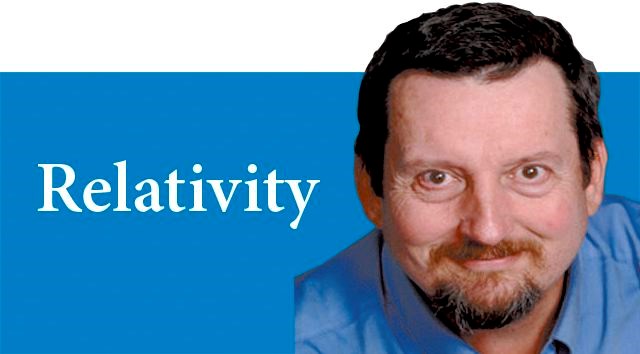In 1994, Kip Thorne published a book entitled Black Holes and Time Warps: Einstein's Outrageous Legacy. It was a semi-populist account of gravitational theory accessible to non-physicists.
In the book, Thorne wrote about the detection of gravitational waves. He discussed the Laser Interferometer Gravitational-Wave Observatory or LIGO and the work which had been done to bring the instrument online.
Indeed, it was Thorne who pushed Caltech to initiate the program to build LIGO in 1976 in conjunction with MIT.
Building massive scientific instruments takes both time and money. The LIGO project was started in 1990 but the instruments only became fully functional in 2015. Of course, the results came swiftly as the first gravitational wave was detected on Sept. 14, 2015.
A gentle wobble in the mirrors at the two interferometers signaled a dramatic collision that occurred 1.3 billion light years away (or 1.3 billion years ago).
An interferometer takes advantage of the difference in time it takes for a laser beam to travel to two very distant mirrors. If the waves travel exactly the same distance, they constructively interfere when they arrive at the detector. If the distance is off by even a small amount, the waves can destructively interfere.
At the practical level the LIGO consists of two interferometers - one at Hanford, Washington and the other at Livingston, Louisiana - consisting of two arms or metal pipes extending four kilometres at exactly ninety degrees to one another.
A laser light is sent into the instrument through a beam splitter. Half of the light goes down one arm and the other half goes down the other.
The light bounces off of a mirror suspended in such a way as to be able to detect minute distortions in space (and time). As a gravitational wave affects each arm in a different fashion - one might extend while the other contracts for example - the length of the paths will differ.
In the case of LIGO, the system is set up so the wavelengths of light from the laser cancel each other (the beam lines are half a wavelength out of sync) but when the arms are distorted light escapes through the beam splitter and hits the detector.
Interferometers are relatively simple instruments demonstrated in a high school physics lab. Using one is not a particularly difficult experiment to do but to do it well and at the level required to detect gravitational wave requires a great deal of advanced electronics and equipment. Further, both of the arms of the instrument must be completely evacuated as air would interfere with the experiment.
Detecting gravitational waves also required two separate interferometer instruments. Since even someone walking around the control room could potentially send vibrations down the arms and affect the mirrors, a signal requires both instruments to respond. And to respond in a way consistent with the passage of a gravitational wave. The first signal was detected in September 2015 but the findings were checked and re-checked prior to the findings being released on Feb. 11, 2016 to make sure there was no other explanation for the signal.
What exactly did LIGO detect? Not just the first measured gravitational wave but the entire course of events as two medium-sized black holes - 29 and 36 solar masses, respectively - collided resulting in a single black hole of 62 solar masses. Simple math tells you 3 solar masses are missing from this equation. These were turned into energy (Einstein's equation). For a brief period of time, the gravitational radiation from the colliding black holes was many time stronger than all of the light from the visible universe.
The rippling effect of the collision was like a bell rung throughout the cosmos. At our distance from the epicentre, it was a subtle distortion of spacetime. It was sort of like the ripple effect in the movie The Matrix when Neo first recognizes his power.
Gravitational waves and black holes are a natural consequence of Einstein's 1915 general theory of relativity. It is a testimony to perseverance and modern technology that the search to detect waves was finally successful albeit 100 years later.
Since the first wave in 2015, another interferometer in Italy has come on line allowing for both better detection and a more accurate fix on the source of gravitational waves. On Aug. 17 of this year, scientists were able to detect the collision of two neutron stars. As this was only 130 million light years from Earth, scientists were able to bring other instruments to bear on the collision. Not only did it produce gravitational waves but there is evidence the collision generated about 10 times the Earth's mass in gold which was flung into space.
For their "decisive contributions to the LIGO detector and the observation of gravitational waves", Kip S. Thorn, Barry C. Barish, and Rainer Weiss were awarded this year's Nobel Prize in Physics.



